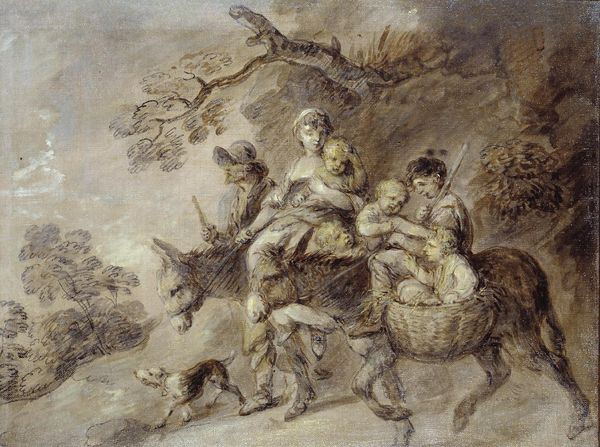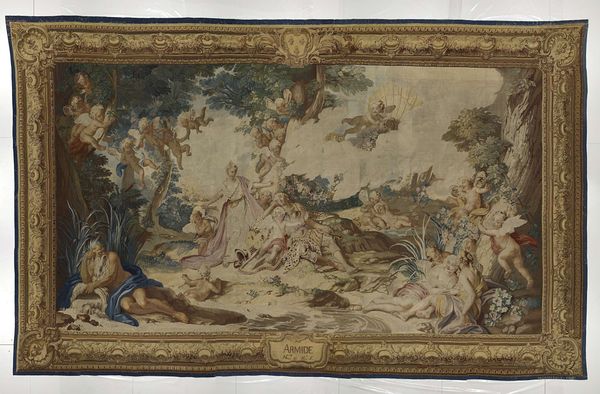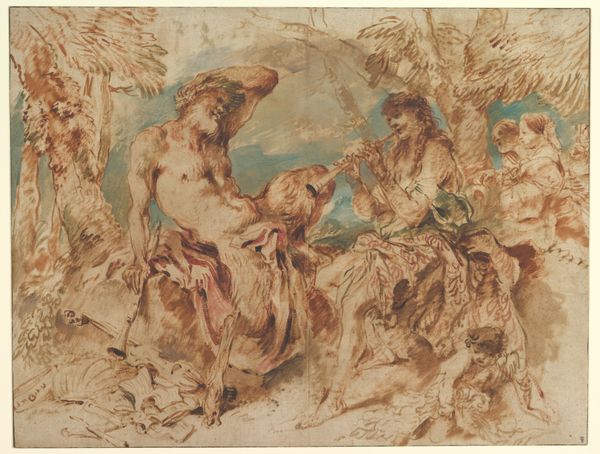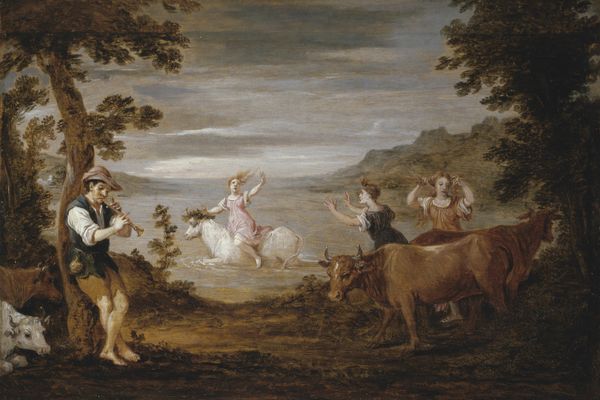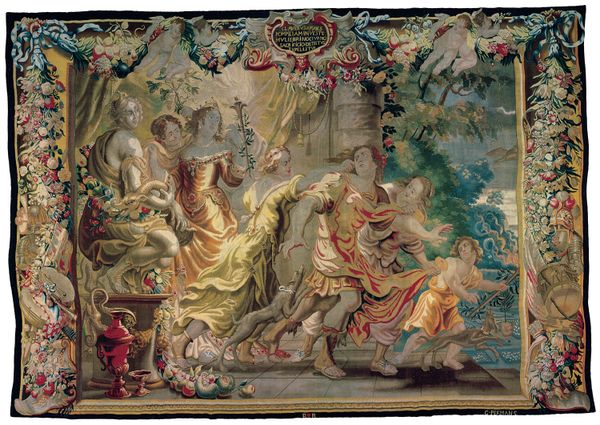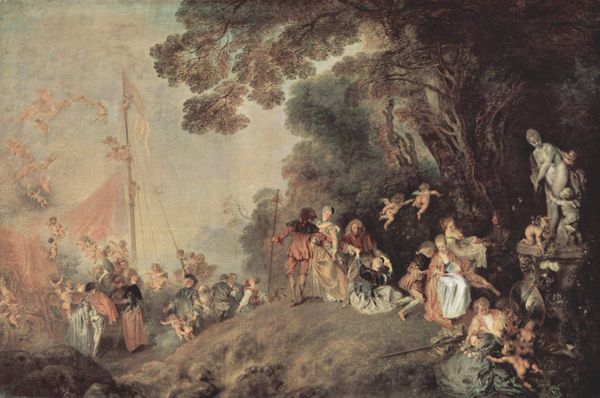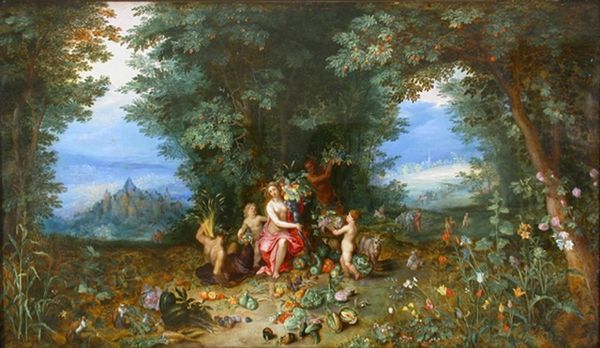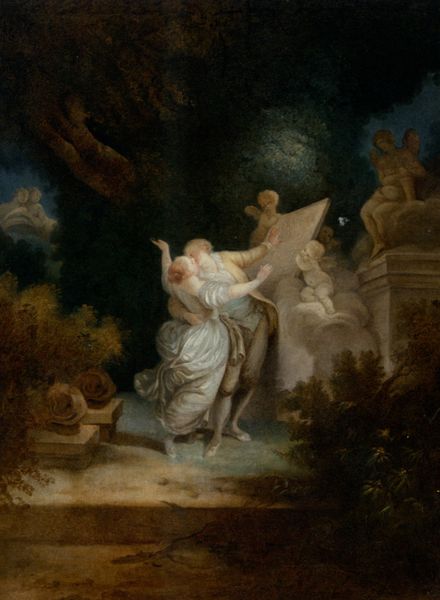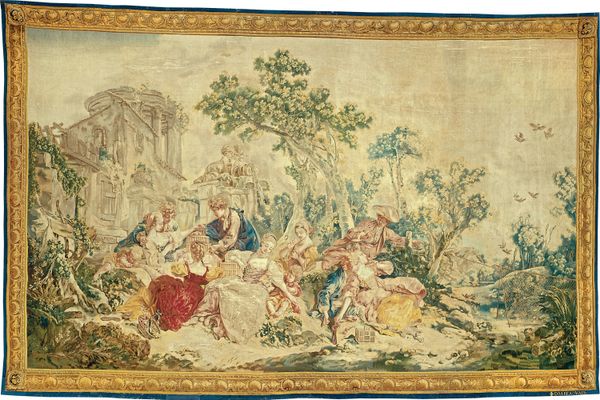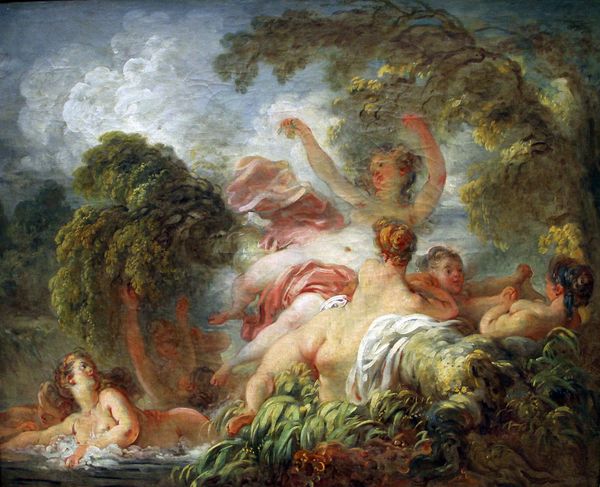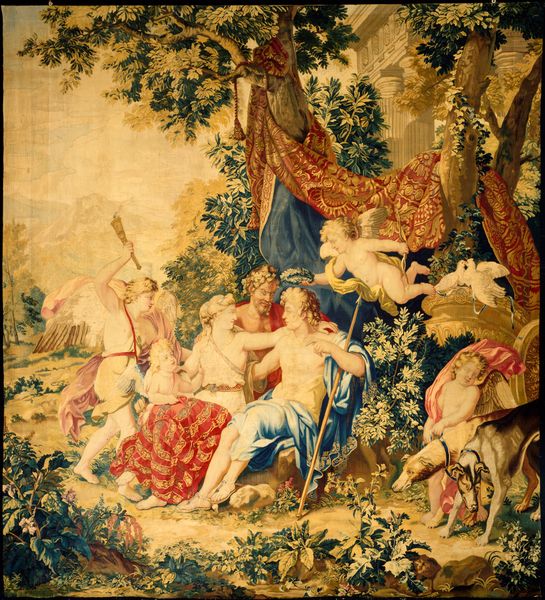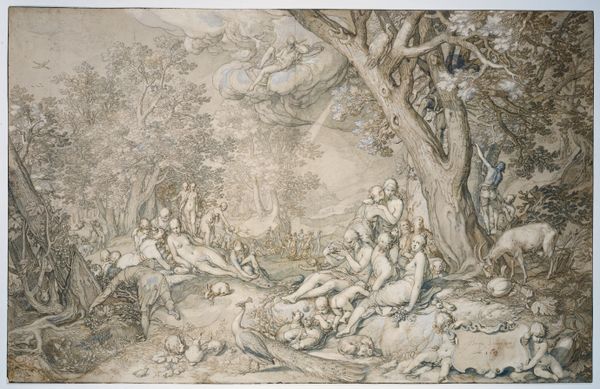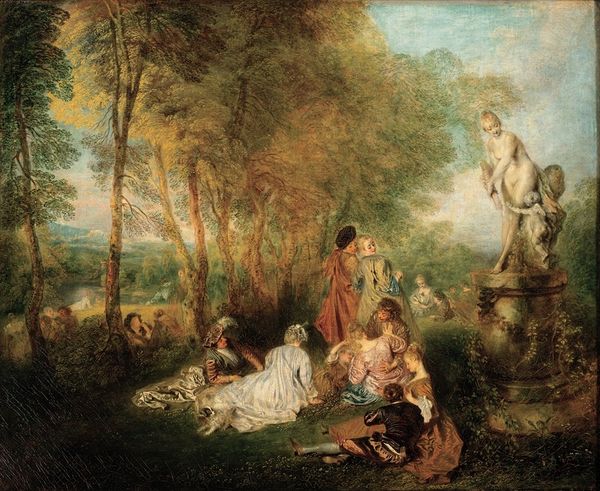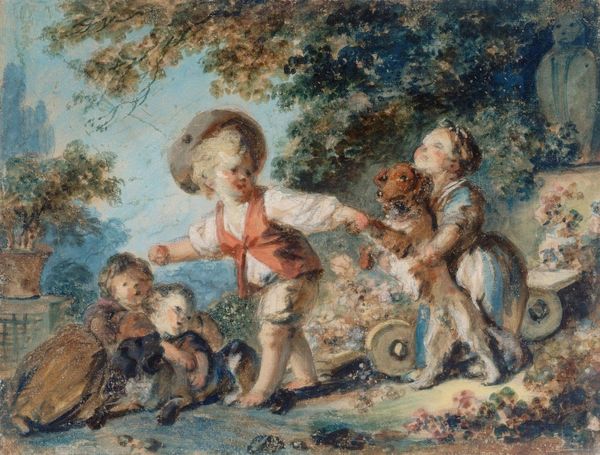
painting, oil-paint
#
painting
#
oil-paint
#
landscape
#
figuration
#
oil painting
#
mythology
#
rococo
Dimensions: 72 x 90 cm
Copyright: Public domain
Editor: So, this is Jean-Honoré Fragonard's "Rinaldo in the garden of the palace of Armida," painted in 1763. It's oil on canvas, and the scene is so dreamy, almost otherworldly. What do you make of all the symbols and imagery? Curator: The garden itself becomes a potent symbol, doesn't it? A gilded cage, reflecting a deep psychological tension. Armida, a sorceress, holds Rinaldo captive with love, distracting him from his crusading duties. Do you notice how the figures are arranged? Editor: I do; it's like two separate groupings. The languid figures on the left seem to be under a spell. Curator: Exactly. Consider the implications of this staged idyll. What's being sacrificed for this fleeting pleasure? Rinaldo, despite his armour, seems captivated, his warrior self subjugated. The image becomes a broader comment on the allure of temptation and its cost. Editor: That's interesting. It's like the armor is just a costume he's wearing rather than something that is functional or integral to who he is. Curator: Indeed. Armor signifies not just protection, but also identity, purpose. Here, its diminished role mirrors the loss of those very things under Armida's influence. Doesn't that idea reverberate across time? The struggle between duty and desire is ever present. What continuities do you see to our own cultural obsessions? Editor: Well, I guess we’re always drawn to stories of people giving up everything for love or passion. And, of course, how beauty can be weaponized. Curator: Precisely. This painting captures the timeless nature of such conflicts. Looking at the painting again with those thoughts gives you pause, right? Editor: It does. I hadn't thought about how much of it is relevant today, especially that battle between love and duty. Thanks for opening my eyes to that!
Comments
No comments
Be the first to comment and join the conversation on the ultimate creative platform.
